Blood Collection and Sample Preparation Definitions and sample preparation • Blood samples containing an anticoagulant such as EDTA start to degrade as soon as the blood is outside of the animal To help minimize this blood should be kept refrigerated and submitted forEDTnticoagulated blood samples for platelet counts Transport EDTA (and citrateanticoagulated plasma) on ice packs The EDTA blood should not in direct contact with the ice (wrap with a paper towel);Sample(s) required (minimum 05ml EDTA blood) Accompanying Form Turnaround times Fetal Genotyping from Maternal Blood Pregnancy must be at least 16 weeks for RhD/C/E/c Pregnancy must be at least weeks for Kell typing 16ml EDTA blood per Rh test plus 3ml paternal blood if available (for RhD only)
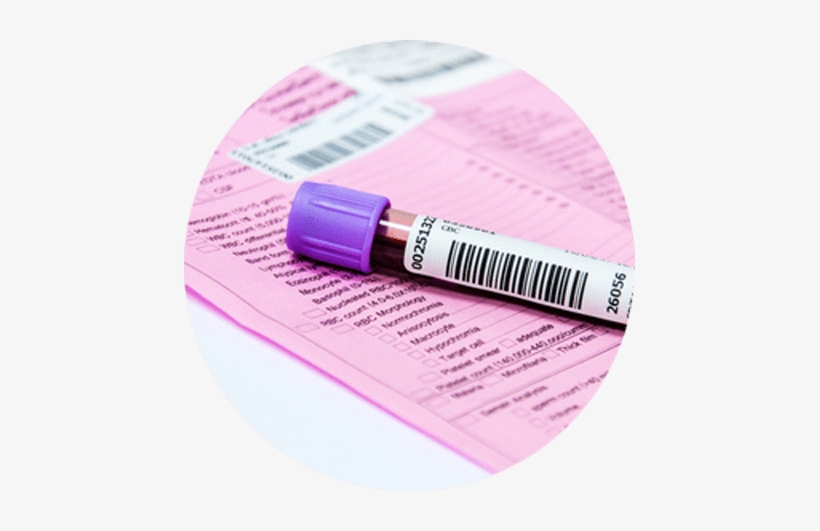
Blood Sample Or Urine Sample Blood In Edta Tube Free Transparent Png Download Pngkey
Edta contamination blood samples
Edta contamination blood samples-In the blood bank, EDTA prevents haemolysis by inhibiting complement bindingThree purple top tubes will be required More than one test (up to 4) can be combined in one tube provided they are for the same laboratory Tests analysed in different labs must each have the required sample
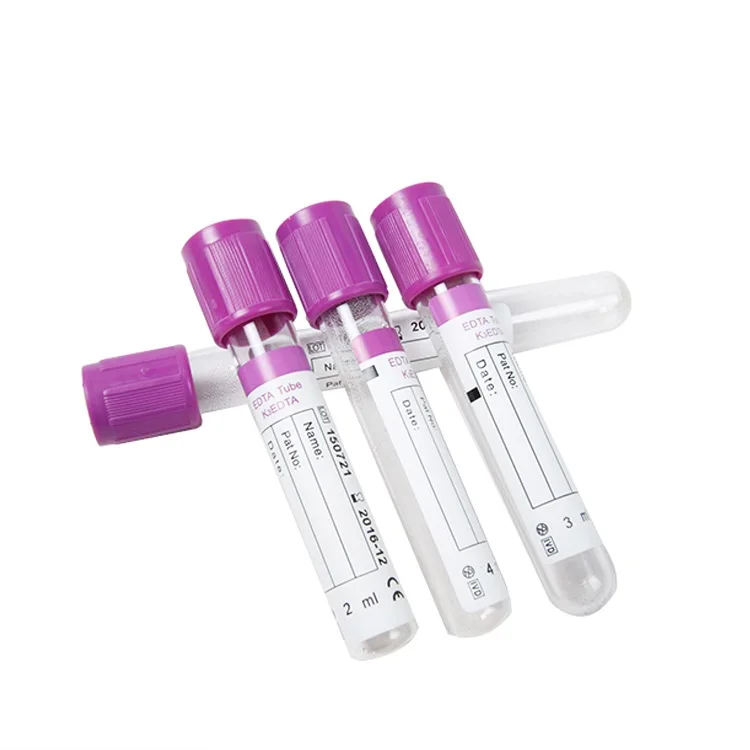



Yueshen High Quality Good Price Sterile Sample Vacuum Edta K3 K2 Blood Collection Test Tubes With Gel Buy Edta K3 K2 Blood Collection Test Tubes Sterile Sample Vacuum Blood Collection Tube Blood Routine
(2) Microscopic examination of sequential samples also appears to enable the diagnosis of EDTAPTCP, since the platelet clumping will be readily apparent (3) Given the widespread use of EDTAcontaining vacutainers for blood collection, identification of PTCP requires a high index of suspicion after the identification of thrombocytopenia in the absence of a suggestive medical historyPlease do not use blood pressure cuff) • 21 gauge Butterfly needles with luer adapter (BD #7251) • Vacutainer barrels • Timer/stopwatchEDTA tubes from Greiner BioOne are available in three versions K2E K2EDTA, K2E K2EDTA Separator and K3E K3 EDTA The additive potassium EDTA (ethylenediaminetetraacetic acid) contained in the tube interferes with calcium and thus blockades the coagulation cascade Our purple and pink top EDTA blood tubes are primarily used for drawing blood
Specimen required 4ml EDTA (lavender) Samples should be sent within two hours of a febrile episode Initial parasite identification and quantitation in the laboratory will be confirmed by the Malaria Reference Laboratory Haematologists will normally advise on the management of the patient Please do not send blood films Complete blood count samples are drawn in a purple or lavendertopped EDTA tube Plasmas are also not interchangeable EDTA plasma has an excess of a powerful chelating agent that will sequester metal ions such as calcium and magnesium EDTA plasma will also inactivate some enzymes that require a metal ion for their activityEDTA is added to blood collection tubes to transport specimens for analysis in chemistry (eg, CEA, lead, renin) and haematology (it is the preferred anticoagulant for blood cell counts, coagulation studies, haemoglobin electrophoresis and erythrocyte sedimentation rate);
The sample required is 49mls of blood in a blue EDTA Sarstedt Blood Transfusion bottle (NHS supply number KCM 131) Minimum blood required for processing is 2ml Paediatric samples must also be collected in the same tube, a minimum of 05 ml is required Blood samples were collected from all 5 of our nondiabetic healthy volunteers and the samples separated into 28 aliquots 14 were collected into Sarstedt 27 mL, K EDTA containers (Sarstedt, Beaumont Leys, UK) and 14 collected into 27 mL Sarstedt serum gel containers The tubes were either stored at room temperature (average temperature 195°C) or The EDTA blood sample can easily last for at least 4 hours at room temperature and for few days inside the freezer Also, it helps to preserve the morphology of the blood cells Coagulation is possible due to the binding nature of the EDTA to the calcium present in the blood Calcium is responsible for the coagulation of the blood




China Cjhina Supplier 5ml Edta Blood Sample K3 Tubes Photos Pictures Made In China Com



Blood Collection Tubes Transparent Polypropylene Tubes Deltalab
Ice may freeze cells in the EDTA tube and cause platelet clumpingNative blood Citrate blood Heparin blood EDTA blood Fluoride blood If blood is to be collected from a venous catheter or needle already in situ, a Multiadapter (Art No 1415) is available for direct connection of the SMonovette® to the Luer adapter of the venous catheter orAsk for the paediatric metabolic consultant on call Please try and collect at least 5 mL EDTA blood for this test Smaller volumes of blood cause poor quality results and are likely to need a repeat sample Samples with less than 3 mL of blood are insufficient for analysis and will not be sent
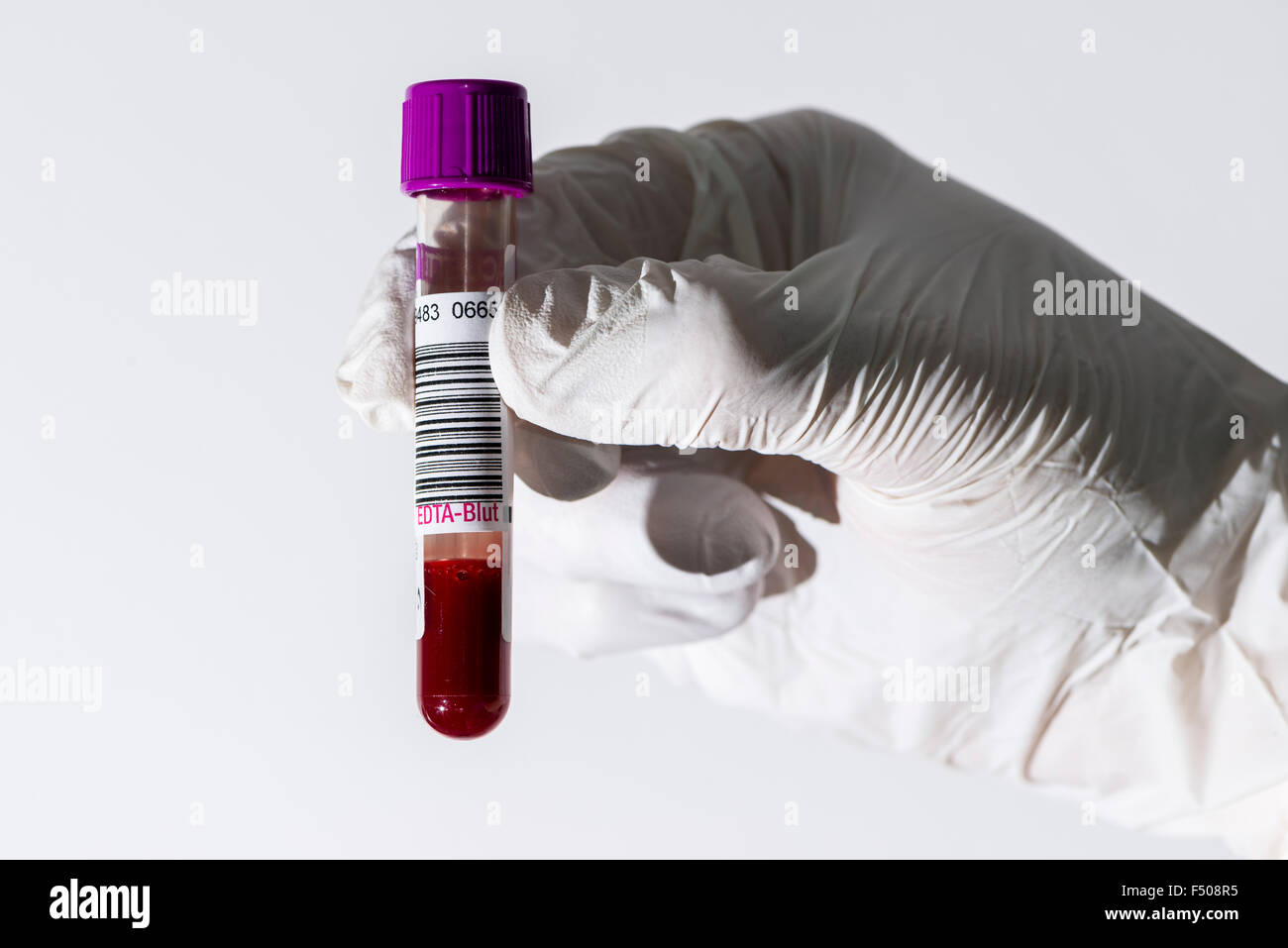



Edta Tube High Resolution Stock Photography And Images Alamy
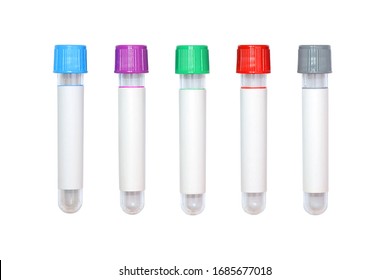



Edta Tube High Res Stock Images Shutterstock
The EDTA anticoagulant is often used in laboratory diagnostic tests, such as the complete blood count (CBC), because it retains the original shape and size of the cells This is because the EDTA anticoagulant can bind with the calcium present in blood, thus preventing the start of the coagulation cascade, which is the process by which blood clot formation occursWhole blood samples submitted in a shipping container containing freezer packs should be sample tubes with EDTA Let specimen clot ~ minutes, then centrifuge at 1,000 2,000g for 10 minutes Afterwards, promptly pipette serum off of cells or gel layer and into anHow to avoid contamination When taking a series of blood specimens, it is essential that the specimens are taken in the correct order – see Order of Draw Chart It is essential that serum samples are taken before citrate and EDTA Failure to adhere to this sequence will lead to contamination of blood specimens with EDTA




Edta Blood Sample Tubes After Laboratory Analysis Stock Photo Picture And Royalty Free Image Image
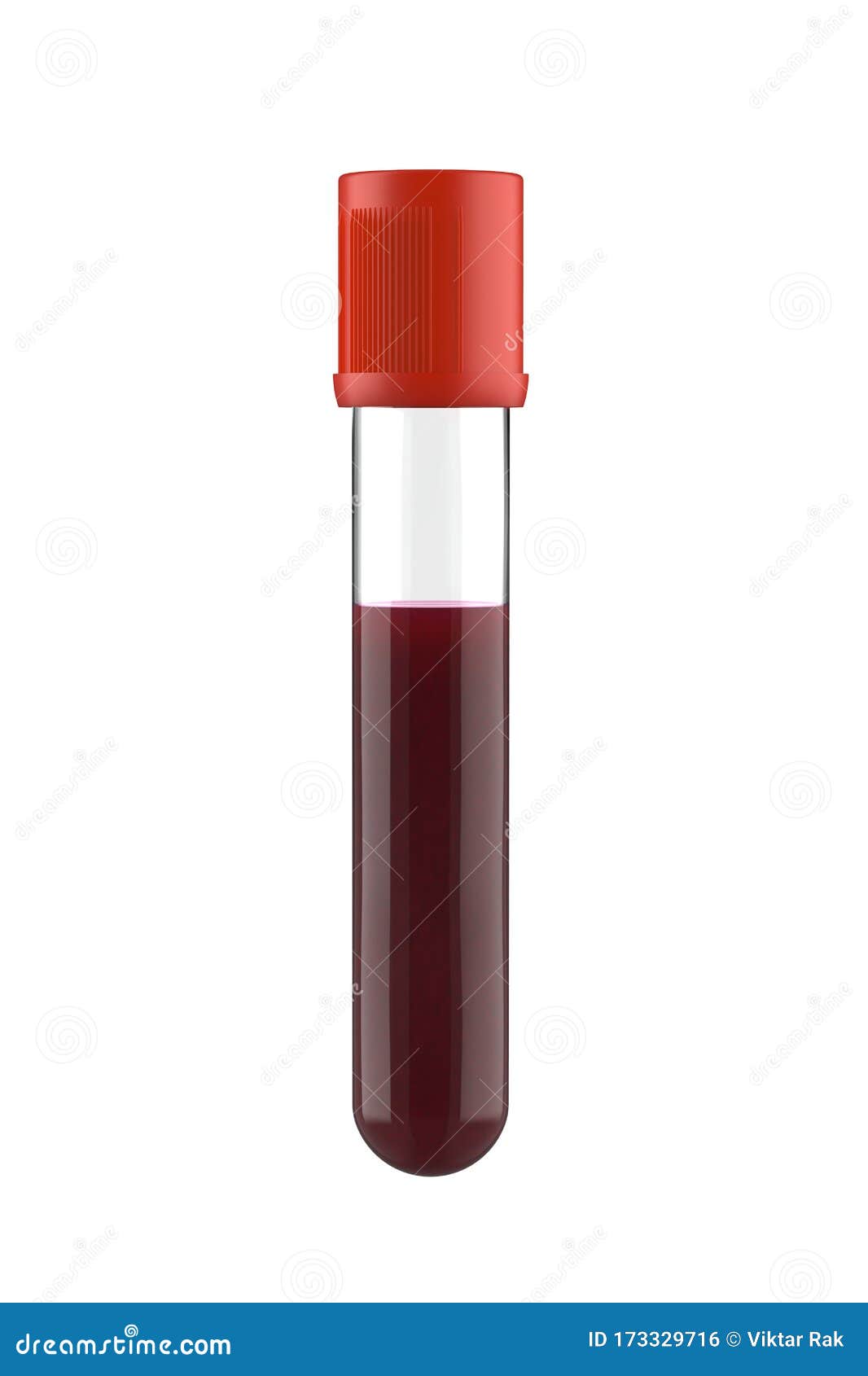



Empty Edta Vacuum Test Tube With Blood Sample Isolated On White Stock Illustration Illustration Of Enzyme Medicine
There were no obvious e¡ ects of sample EDTA concentration, with or without storage, on analyses for albumin, chloride,gglutamyltransferase (gGT), iron, phosphate, sodium, total protein or triglyceride For example, maximum variation of any of these results in the 5¢0mmol/L EDTA sample after 72h storage from that of the zero EDTA sample at minDescription The EDTA inhibits the coagulation process by eliminating the calcium in the blood, reducing the platelet activation by protecting the platelets when the blood comes into contact with the inner surface of the tube Ideal for counting leucocytes, platelets and red blood cells or for determining the leucocytic formula, for flow cytometry and for determinations of lead as the morphologies of the blood cellsEDTA is used extensively in the analysis of blood It is an anticoagulant for blood samples for CBC/FBCs, where the EDTA chelates the calcium present in the blood specimen, arresting the coagulation process and preserving blood cell morphology Tubes containing EDTA are marked with lavender or pink tops




Paediatric Blood Sample Tubes With Edta Coating Servoprax Com



1
Nonmammalian samples Only small amounts of blood can be collected from these species, necessitating the use of Microtainer® tubes Similar to mammals, EDTA is the preferred anticoagulant for nonmammalian hematology However, there are certain species of birds, eg cranes, and reptiles, eg turtles, whose blood hemolyzes on contact with EDTAAn EDTA test is used to assess the function of your kidneys through a series of blood tests EDTA refers to the name of the substance that you will receive by injection EDTA contains a small amount of radioactive material This allows it to act as a tracer which will show the kidney function EDTA wholeblood samples stored at room temperature with preservative produced relative yields between 60% and 80% over the year When the researchers added the agent before freezing at − 80 ° C, they observed relative extraction yields of >85% across the time course



1
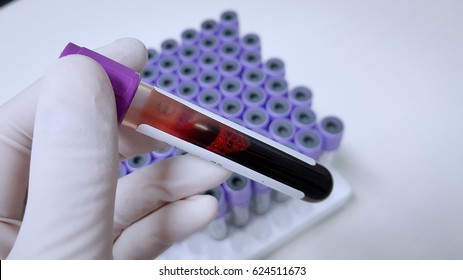



Edta Tube High Res Stock Images Shutterstock
"If blood is preserved with EDTA there will be a 'boatload' of it present in a bloodstain sample," McCord said "The question of sensitivity would only arise if the blood• For Blind Duplicate Samples 5 mL serum (BD ) and 5 mL EDTA (BD ) tubes • Alcohol prep pads • Tourniquets (quickrelease tourniquet, supplied by the blood lab, is recommended; Background Potassium ethylenediaminetetraacetic acid (EDTA) is a sample tube anticoagulant used for many laboratory analyses Gross potassium EDTA contamination of blood samples is easily recognised by marked hyperkalaemia and hypocalcaemia (13)Subtle potassium EDTA contamination, however, is a relatively common often unrecognised erroneous cause of




Blood Sample Handling Bioscint




What Is At The Bottom Of A Blood Vial Quora
Order of draw is a good method to Drawing the sample we should always follow this procedure this is very helpfull improve our result reading in this method we use the culture bottol ,and sodium citrate ,sst/red top , heparin , edta , flouride aslo we usedThe samples should be maintained at 2–8°C while handling If the plasma is not analyzed immediately, the plasma should be apportioned into 05 ml aliquots, stored, and transported at –°C or lower It is important to avoid freezethaw cycles Samples which are hemolyzed, icteric, or lipemic can invalidate certain tests Neat EDTA blood samples were extracted in triplicate while each of the pooled EDTA blood samples (12, 15, 110 and 1) were extracted and tested in ten replicates Five microliters of BTV RNA was denatured at 95 °C for 5 min prior to




Yueshen High Quality Good Price Sterile Sample Vacuum Edta K3 K2 Blood Collection Test Tubes With Gel Buy Edta K3 K2 Blood Collection Test Tubes Sterile Sample Vacuum Blood Collection Tube Blood Routine




Cml Biotech P Ltd
Stability of whole blood samples for haematological measurements Interested partners of EQALM, ENERCA and ICSH Aims and purposes In general haematological parameters have been measured from EDTA anti coagulated whole blood, shortly after drawing During the last years, however, the increasing centralization ofUnfortunately, no universal anticoagulant that could be used for evaluation of several laboratory parameters in a sample from a single test tube is available so far Ethylenediamine tetraacetic acid (EDTA) is a polyprotic acid containing four carboxylic acid groups and two amine groups with lonepair electrons that chelate calcium and several other metal ionsIn fact, PBMC viability was maintained at or above 85% for all PBMC samples except for a single sample Further, no significant differences were observed in the percentage of viable cells among total leukocyte samples isolated from EDTA blood following a delay after venipuncture of 724 h compared to 2 h controls




Vacuum Blood Collection Tube Buy K3 Edta Blood Tube For Blood Sample Taking With Ce Certificate On China Suppliers Mobile
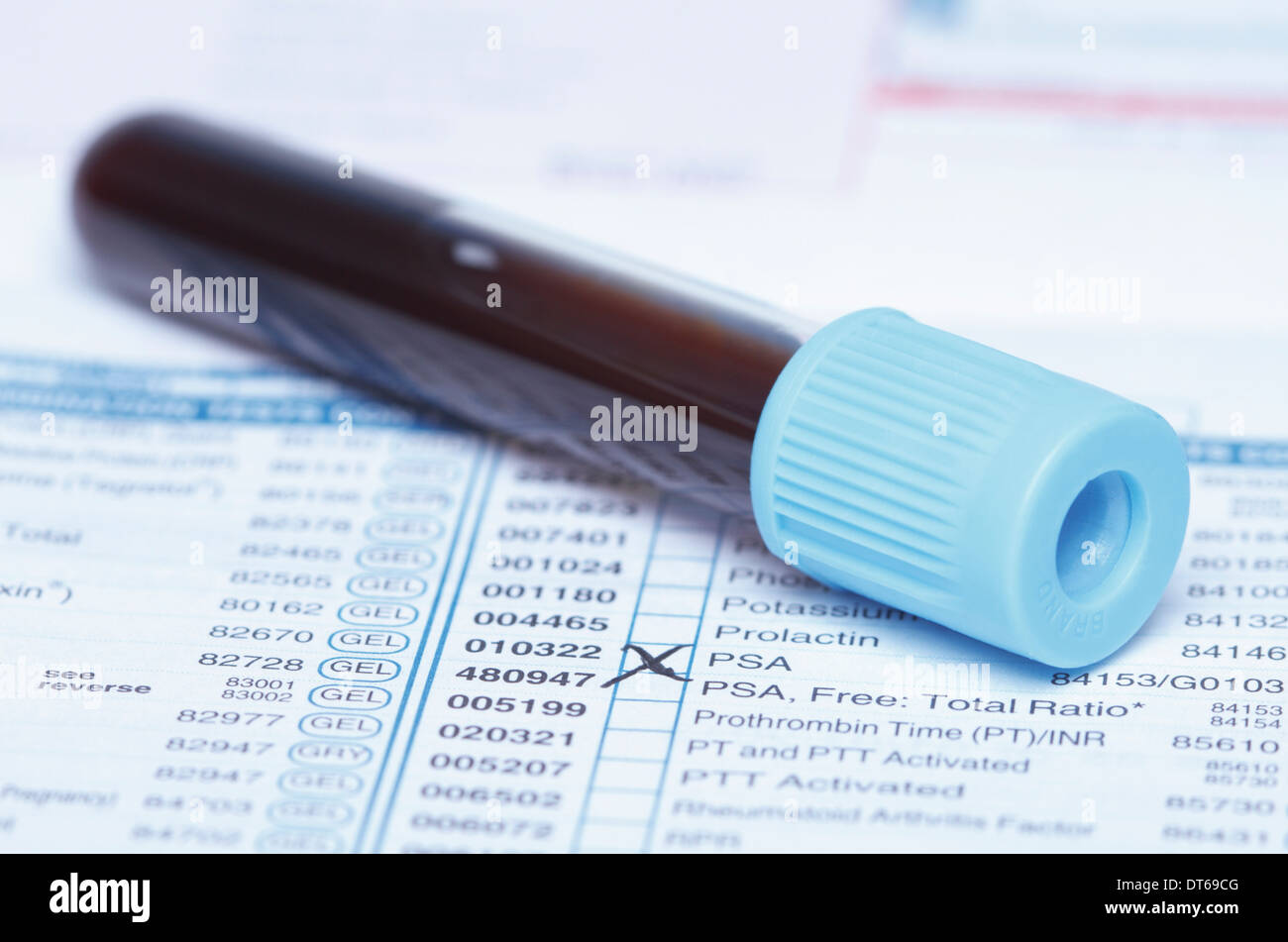



Edta Tube High Resolution Stock Photography And Images Alamy
The cytokine levels are lower in plasma than in serum • Cytokines should be analysed in immediately cooled EDTA or citrated blood samples • Only EDTA blood samples can be stored for up to 4 h at 4 °C before centrifugation The cytokine levels are stable in separated plasma for up to 4 h at 4 °C Reference ranges of cytokines in EDTA plasma from 162 controls were Purple blood bottles contain EDTA (ethylenediaminetetraacetic acid), which acts as a potent anticoagulant by binding to calcium in the blood EDTA also binds metal ions in the blood and is used in chelation therapy to treat iron, lead or mercury poisoningAscertained from history taking and vital sign examination Blood samples from 33 subjects were taken using vein puncture Two millimeters blood was divided into 4 Na 2 EDTAcontaining tubes Before that, one drop of blood without Na 2 EDTA anticoagulant was used for making control blood film right after vein puncture
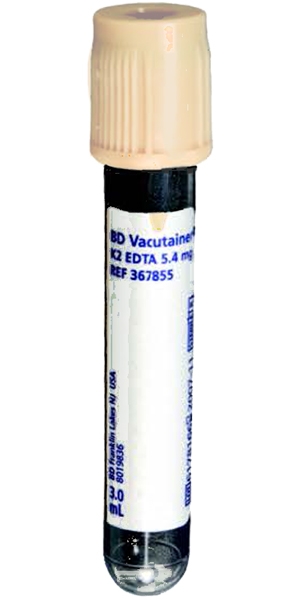



Laboratory Alliance Of Central New York Llc




High Quality Good Price 2ml Sterile Sample Vacuum Edta K2 Blood Collection Test Tubes With Gel China Edta Tube Vacuum Tube Made In China Com
Background Potassium ethylenediaminetetraacetic acid (EDTA) is a sample tube anticoagulant used for many laboratory analyses Gross potassium EDTA contamination of blood samples is easily recognised by marked hyperkalaemia and hypocalcaemia However, subtle contamination is a relatively common, often unrecognised erroneous cause of spurious hyperkalaemia Sample taken from drip arm;Safety Blood Collection Sets with Luer Adapter and Holder 21G needle KFK 137 23G needle KFK 138 Safety Blood Culture Collection Sets with Blood Culture Bottle Adapter 21G needle KFK 416 23G needle KFK 417 9ml KFK 076 HIVandHCVviralloadtesting, VirologyMolecularPCR EDTA VACUETTE ® products and ordering codes Ensuretube filledto indicated mark



Brd Nci Nih Gov Brd Sop Download Pdf 1561
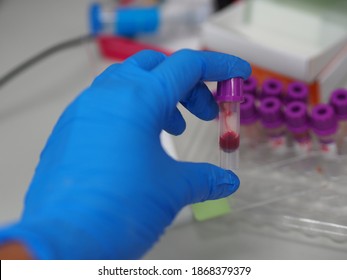



Edta Blood Images Stock Photos Vectors Shutterstock
K3EDTA is a liquid and will dilute the sample ~ 12% K2EDTA is spraydried on the walls of the tube and will not dilute the sample Slightly higher results have been seen from the K2EDTA tube in some CBC parameters, but none of these were clinically significant It is important to mix the sample 8 10 times immediately after collection to ensure all the anticoagulant is thoroughly mixed with the blood sampleAim The aim was to study the stability of blood samples given at first visit for registration as platelet donors Specific hematologic parameters were studied at time intervals of 4, 48 and 72 hours Materials and Methods Eligible donor's venous blood sample was collected in K2EDTA (Ethylenediaminetetraacetic acid) vacutainers for cell counts We have also observed that when syringes are used to collect blood samples into EDTA tubes, they are sometimes overfilled, leaving too little air space to enable proper mixing during inversions All blood sample tubes have an expiry date, so it is important to check the date on the tube before using it – if the tube has expired, replace it, as this negatively affects its
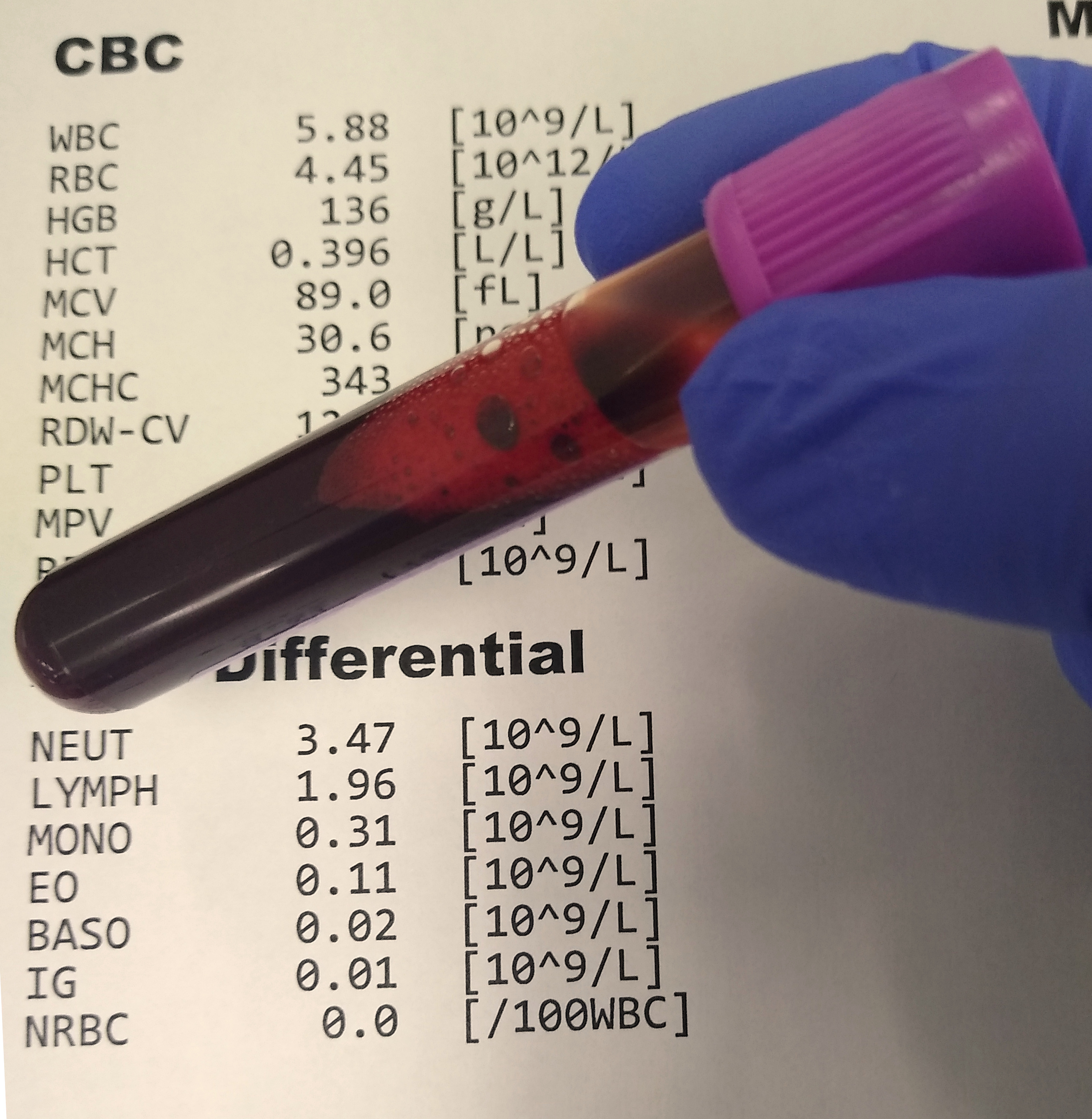



Complete Blood Count Wikipedia
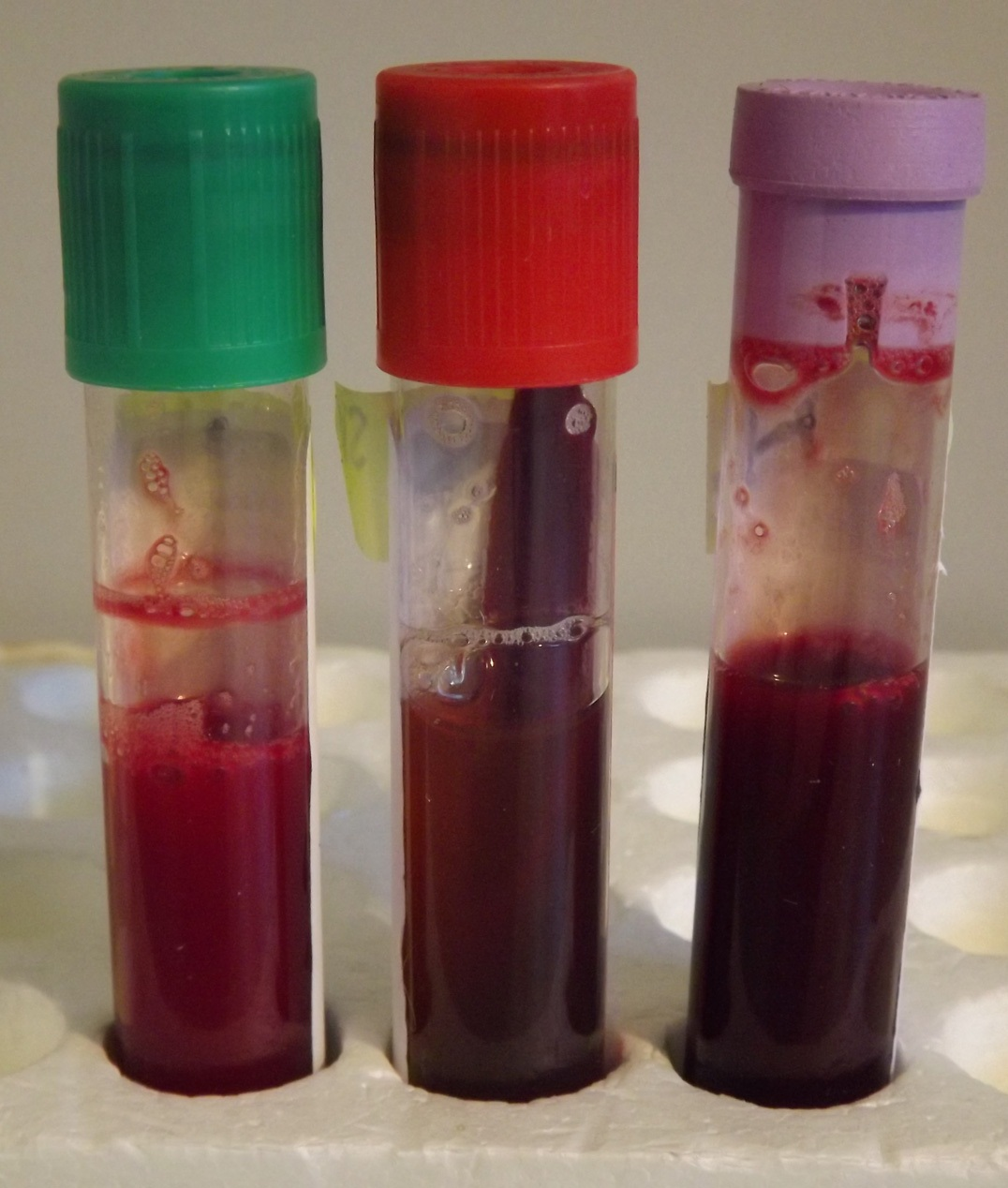



Selecting The Right Blood Test Tube And Techniques For An Accurate Diagnosis Agriculture And Food
Low sample volume Collection of a small blood volume (eg 051 mL) with placement into a standard 5 mL EDTA tube will cause shrinkage of red blood cells, because EDTA is hypertonic This will cause a false decrease in the mean cell volume (MCV) and false increase in mean cell hemoglobin concentration (MCHC) of red blood cellsEDTA whole blood samples must be run within 1 hour at room temperature, and may be stored refrigerated for up to 12 hours 7 Blood should return to room teperature prior to running on the HM5 * Stored plasma and serum samples must be separated and kept in a stoppered test tube containing no additive Plasma stored from EDTAtreated blood can also be used to measure most proteins, and genetic material can easily be stored from EDTA buffy coats (the interface between the red cells and the plasma after centrifugation, containing white cells and platelets) Note these tubes contain either K2EDTA or K3EDTA Sodium Citrate (Light Blue)




Q A Color Coded Blood Collection Tubes Antijenic Drift




Vacutainer Tube Edta K2 10 8mg Blood Sample Collection Tube
Increased drip analytes eg glucose, potassium etc Dilutional effect lowers other analyte concentrations Incorrect sample tube Contamination of red/ yellow top tubes with blood containing EDTA (from purple top tube) Increased potassium Decreased calcium, alkaline phosphatase, iron, magnesium Lipaemia (fatty sample) With the correct blood sampling procedure, the collected blood is exposed to the EDTA which binds and withholds calcium ions thereby blocking the activation or progression of the coagulation cascade – ultimately inhibiting clot formationDNA sample collection For all genetic tests we need a DNA sample, this can be either blood or buccal swabs EDTA BLOOD TUBE nnnnnnnnnnnnnnnn BUCCAL SWAB Blood 05 – 1 ml whole blood in EDTA blood tube per test Blood must be collected by a vet There is no minimum age for using blood Buccal (Cheek) swabs 2 swabs per animal per test Buccal




Edta Blood Sample Tube Image Photo Free Trial Bigstock




Immunology Blood Image Photo Free Trial Bigstock




Plastic 2 9ml Edta Vacuum Blood Test Tube Manufacturers Suppliers Free Sample Noke Lab




Specimen Collection Laboratory Alliance Of Central New York Llc
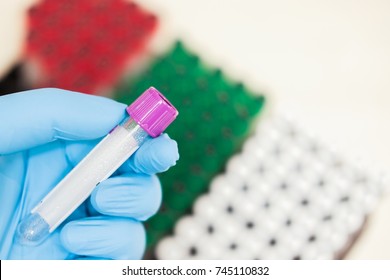



Edta Blood Images Stock Photos Vectors Shutterstock



What Is The Edta Test In Making A Murder And Why Is It Important
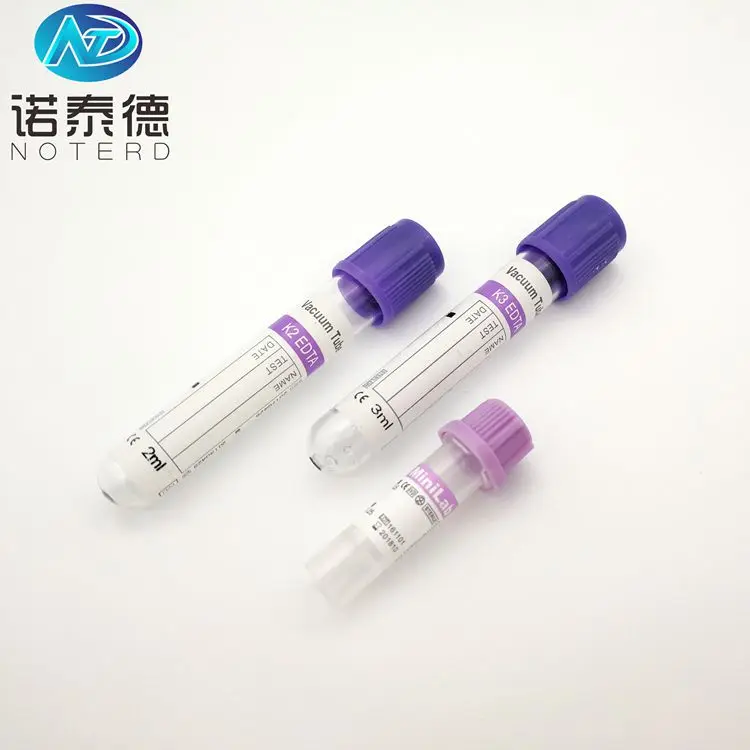



Health Disposable Nipro Edta Blood Sample Collection Tube With K2 K3 Buy Blood Collection Tube Vacuum Disposable Edta Tube Blood Sample Tube Product On Alibaba Com



Can I Use Edta Blood Collection Vacutainers In A 80 Freezer The Laboratory People




Next Wednesday May 7 Blood Collection In Mountain View Ca Personal Genome Project Blog
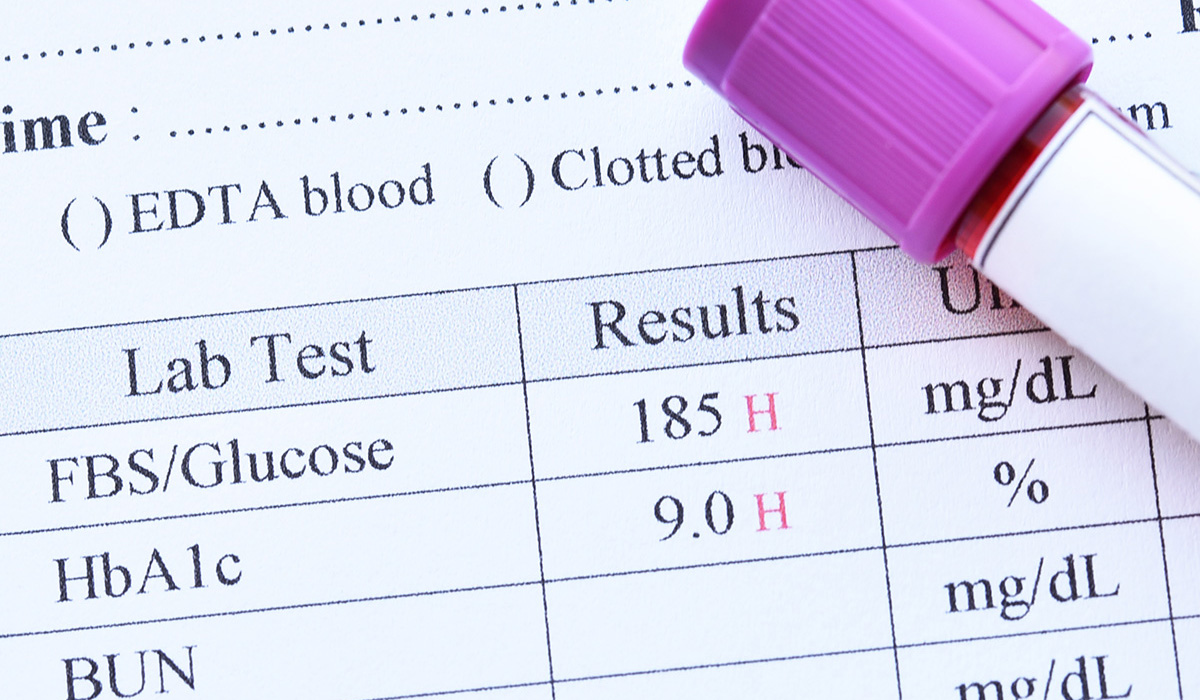



What Is The A1c Test Good Neighbor Pharmacy
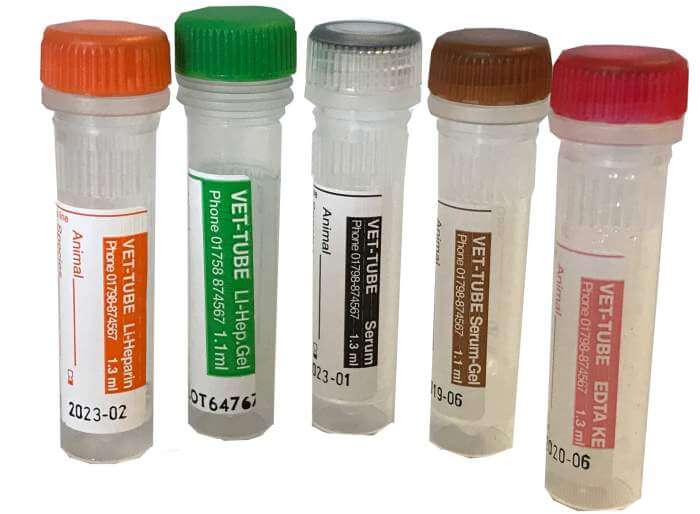



Blood Collection Tubes Including The Vet Tube Range Vetlab Supplies Ltd




China Edta Tube Blood Sample Collection Tube China Edta Tube Blood Collection Tube
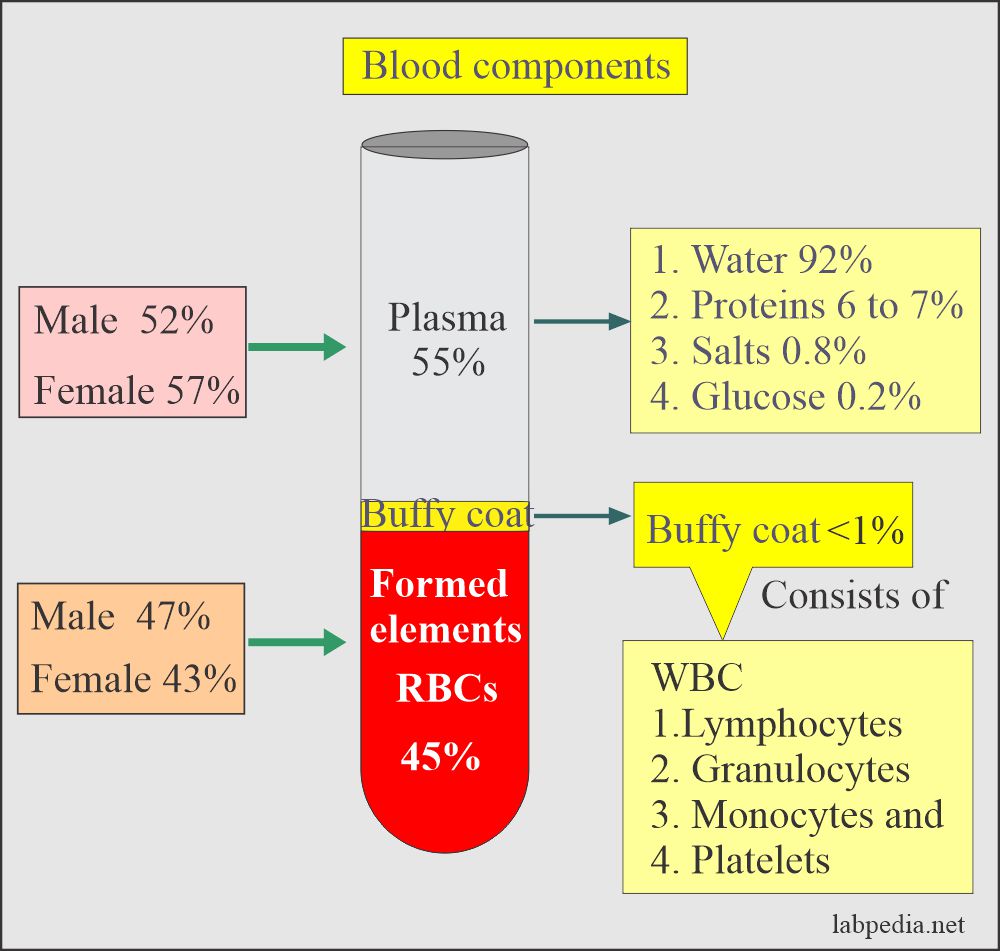



Blood Sample Types Anticoagulants Preservatives Adverse Effects Of Additives Labpedia Net



Blood Collection Tubes Special Pediatrics Tubes Deltalab




Color Coded Blood Tubes Containing Synthetic Blood Samples Blue Top Buffered Sodium Citrate Green Top Lithium Heparin Anticoagulant Lavender Top K2 Edta Anticoagulant Stock Photo Dissolve
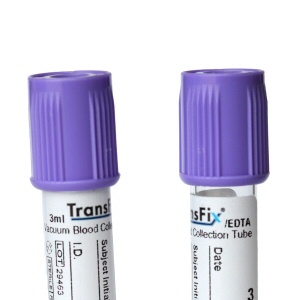



Transfix Blood Collection Tubes Cytomark Limited




Blood Collection Tube With Color Heads




Cibesmed Blood Sample Tube With K2 Edta 13 X 75mm 3ml




Blood Sample Or Urine Sample Blood In Edta Tube Free Transparent Png Download Pngkey




China Edta Tube On Global Sources Edta Tube
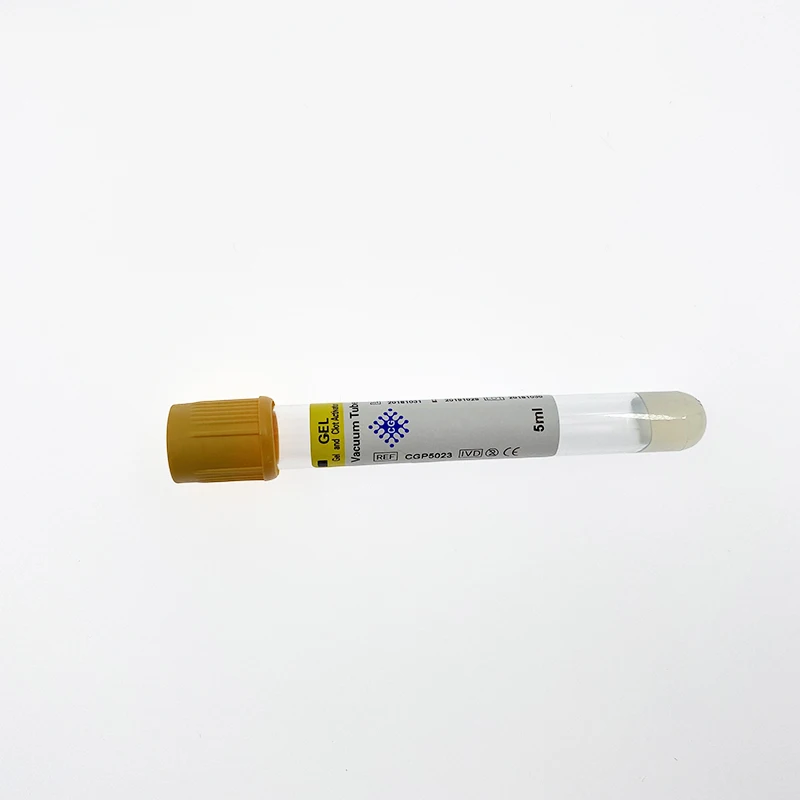



Best Price Ce Edta K2 K3 Gel Clot Activator Tube Blood Vacuum Blood Collection Tube Sample Tube Buy Ce Isovacuum Blood Sample Collection Tube Manufacture Factory Price Vacuum Edta Blood Collection Tube Medical Disposable Vacuum



Ce Fda Approved Blood Sample Collection Tubes K2 Edta 7ml Stable Performance
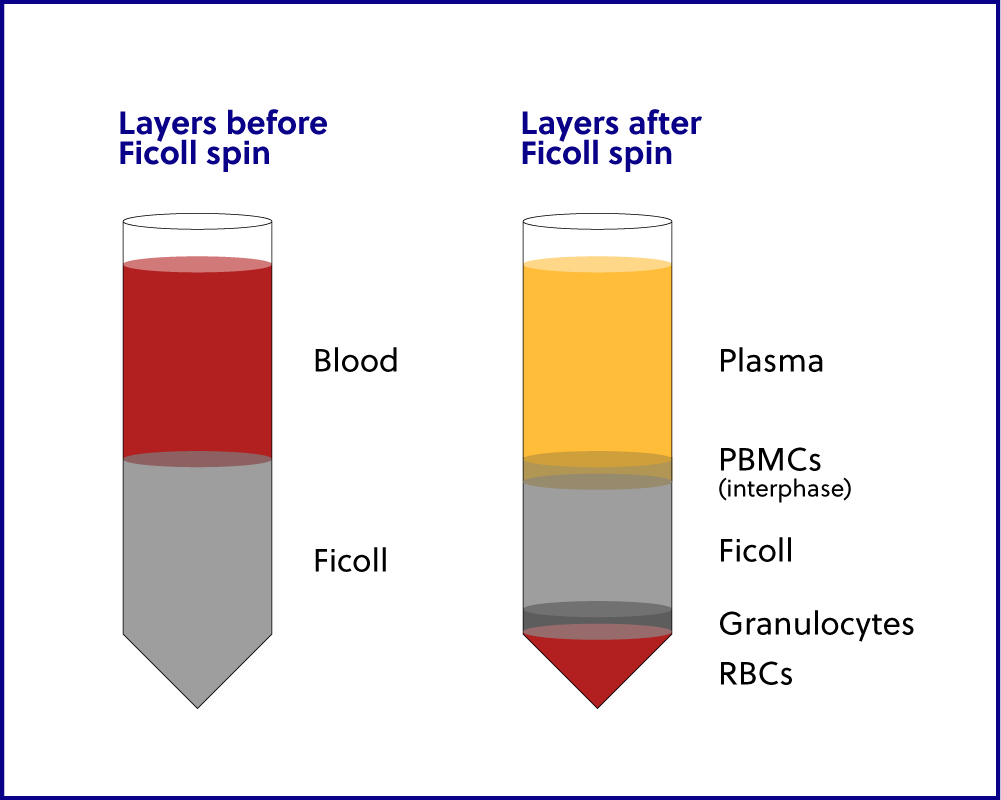



Blood Collection And Sample Considerations Immune Sequencing




Edta Blood Sample Tube Blood Collection Tube For Laboratory Isolated Stock Photo Picture And Royalty Free Image Image



Http Med Stanford Edu Content Dam Sm Sccr Documents Trainingsessions Biospecimen sampling 17nov15 science talk Pdf



1




Blood Test Blood Sample Edta Tube Stock Photo Adobe Stock




Effect Of Storage Of Edta Blood Specimens On Real Time Pcr Results The Download Scientific Diagram
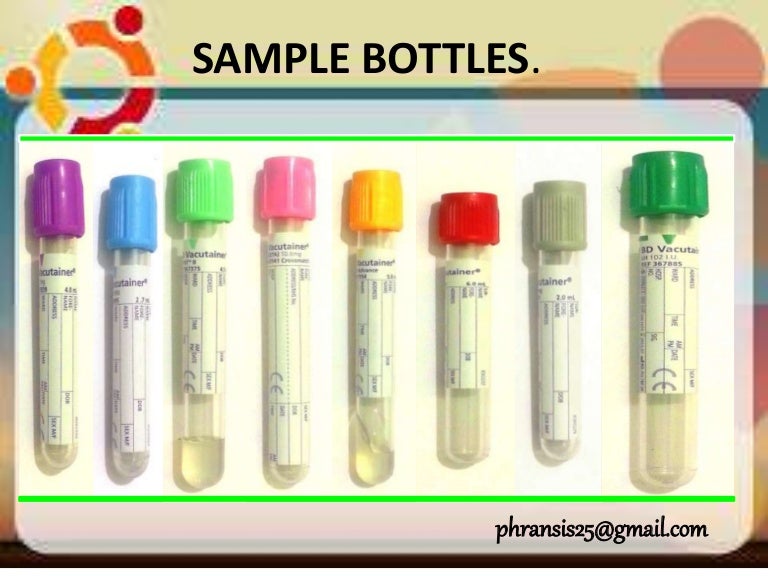



Sample Bottles
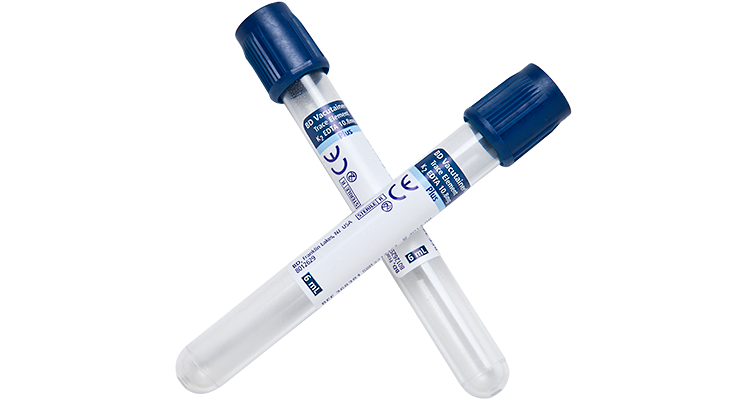



Vacutainer Blood Collection Tubes



Long Term Storage Impacts Blood Dna Yield But Not Integrity Or Methylation
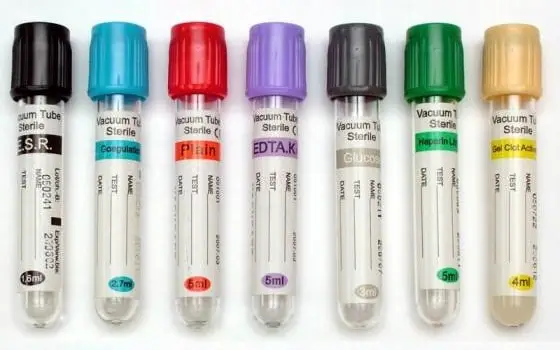



Common Blood Collection Tubes Their Additives And Laboratory Uses Laboratoryinfo Com




Premium Photo Vacutainer Blood Collection Tubes Edta Blood Tube For Cbc Test In Laboratory




Blood Sample Tube Clot K3 Edta Tubes Edta Blood Collection Tube Wholesaler From Pune




China Edta Tube Blood Sample Collection Tube China Edta Tube Blood Collection Tube




Edta Double Cap Blood Sample Tube Edta K3 Vacuum Tubes Wholesale Supplier From Nashik




Disposable Plastic Medical Syringe And Color Coded Tubes Containing Synthetic Blood Samples Blue Top Buffered Sodium Citrate Lavender Top K2 Edta Anticoagulant Stock Photo Dissolve
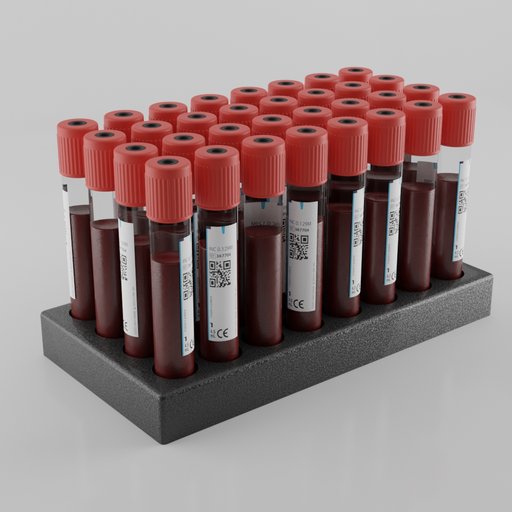



Blenderkit Model Edta Blood Sample Collection In Category Science Medical Equipment By Steffen Kogler



Glass Pet K2 K3 Edta Vacutainer Laboratory Vacuum Blood Test Tubes




Blood Vial With Blood Sample With Syringe Blood Vial With Blood Sample With Syringe On Test Form Canstock




Blood Sample Analysis Microbiology And Cell Biology Medicinal Chemistry Emery Pharma




Paediatric Blood Sample Tubes With Edta Coating Servoprax Com
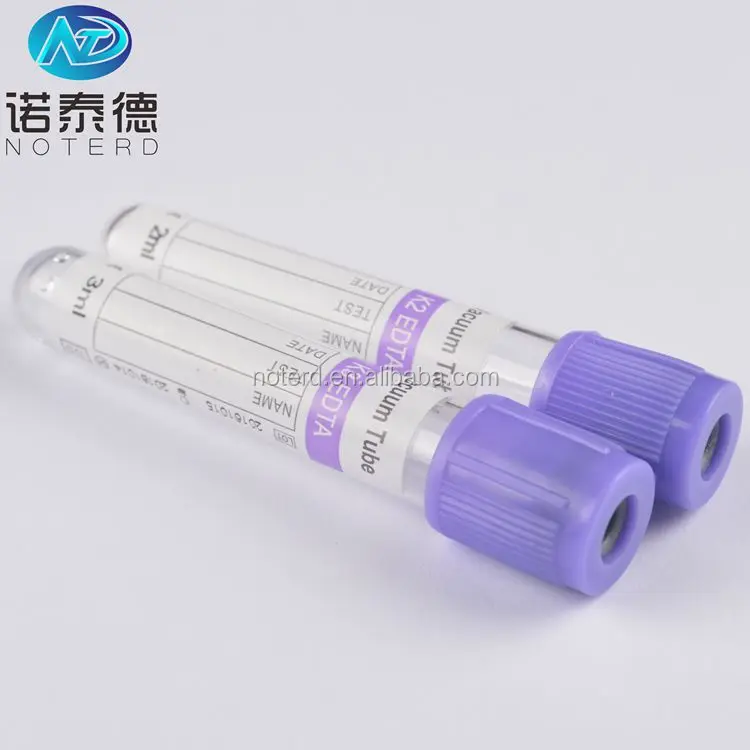



Top Quality Medical Vacuum Edta K2 K3 Vacutainer Blood Sample Collection Bottles Buy Blood Bottles Blood Sample Bottles Blood Sample Collection Bottles Product On Alibaba Com




Whole Blood Vacutainer Tube Collections Fresh Edta Stemexpress




Cylindrical Collection Tube Vs K3 Cml Biotech Pet K3 Edta




Functional Classification And Colour Codes Vacutainer Tubes




Evaluation Of A Two Sample Process For Prevention Of Abo Mistransfusions In A High Volume Academic Hospital Bmj Open Quality




Serum Analyte Concentrations In Blood Samples Collected Before And Download Table



Min Lab Microblood Sample Collection Tubes Sealed Butyl Rubber Stopper Edta Blood Tube
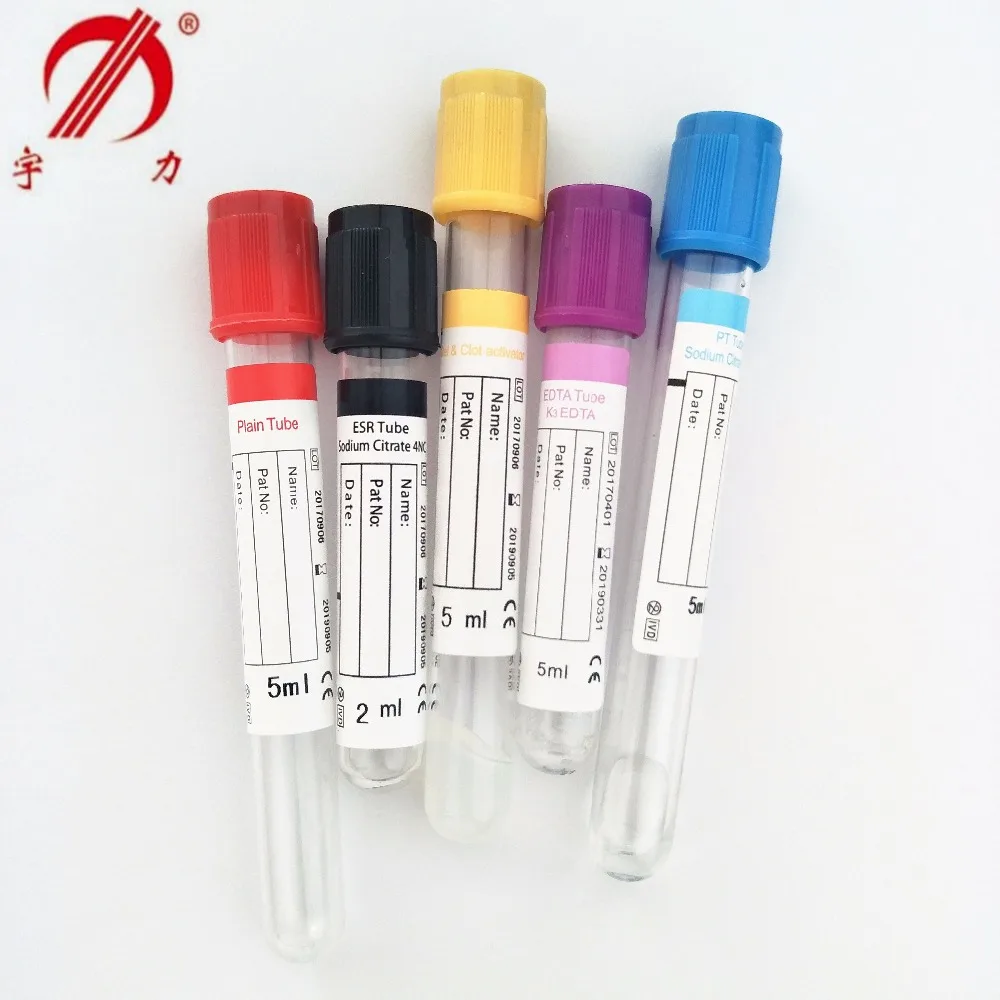



Purple Colour Blood Bottles Tubes With Edta For Blood Sample Drawing Buy Colour Blood Bottles Draw Blood Sample Edta In Blood Tubes Product On Alibaba Com



3




Edta Double Cap Blood Sample Tube For Laboratory Rs 1 75 Piece Id
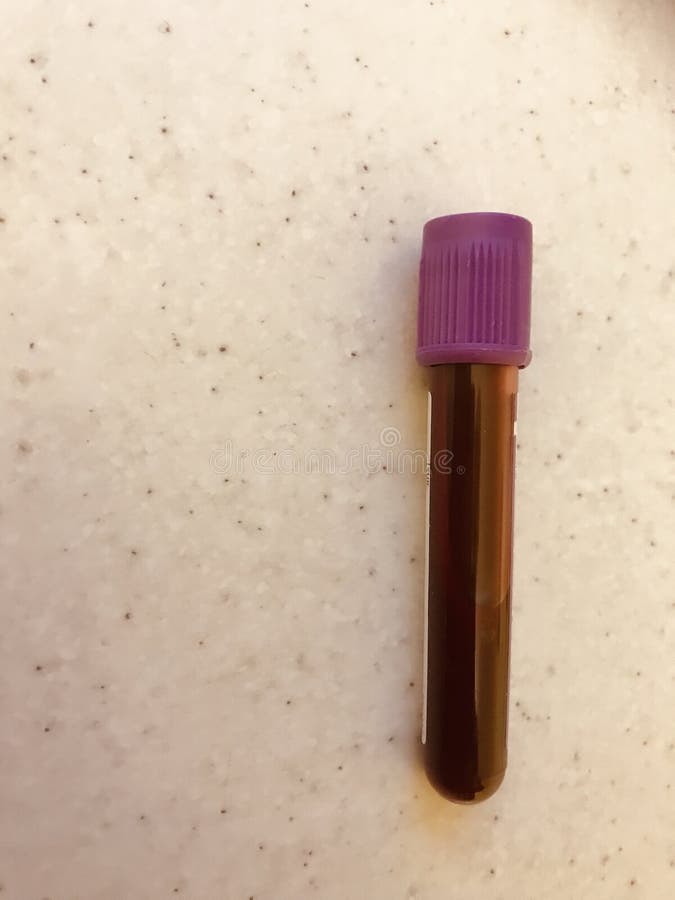



Lavender Top Blood Sample Edta Vacuum Tube Full Of Blood Stock Photo Image Of Form Laboratory




Hemolyzed Blood Sample In The Hand Of Scientist Edta Science Stock Photo
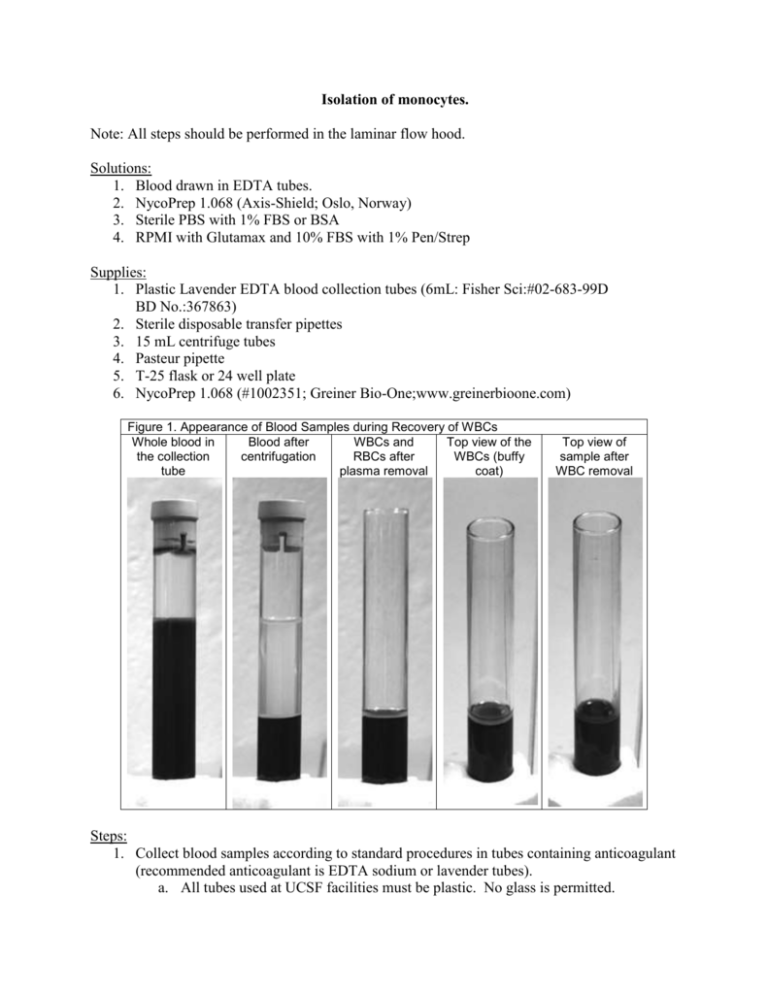



Isolation Of Monocytes




Hematology Immunology Image Photo Free Trial Bigstock




Blood Sample Analysis Microbiology And Cell Biology Medicinal Chemistry Emery Pharma




Edta Blood Tube For Cbc Test In Laboratory Stock Photo Picture And Royalty Free Image Image




Blood Collection Tubes The Right Choice For Your Experiment



Vacuum Blood Collection Tubes Eugenics Company Limited
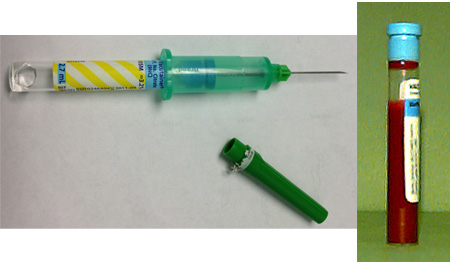



Sampling Instructions Cornell University College Of Veterinary Medicine




Blood Bottles Guide Youtube




Effect Of A Several Volumes Edta Treat Vs Blood Sample B Download Scientific Diagram




What Is An Edta Anticoagulant With Pictures




China Gel Edta K2 Nat Blood Sample Collection Tube 9ml China Nat Tube Blood Tube



Children S Hospital Of Philadelphia Tests




vacutainer Plastic Blood Collection Tubes With K2edta Tube Stopper Blood Fisher Scientific




Edta Vacutainer For Blood Sample Collection At Best Price In Mumbai Maharashtra Plus Enterprises



E D T A I N B L O O D S A M P L E S Zonealarm Results




Blood Sample With Testosterone Hormone Result Stock Photo Download Image Now Istock




Blood Sample Vial With Whole Blood In A Edta Lavender Vial For Haematology Cells Count Stock Photo Download Image Now Istock
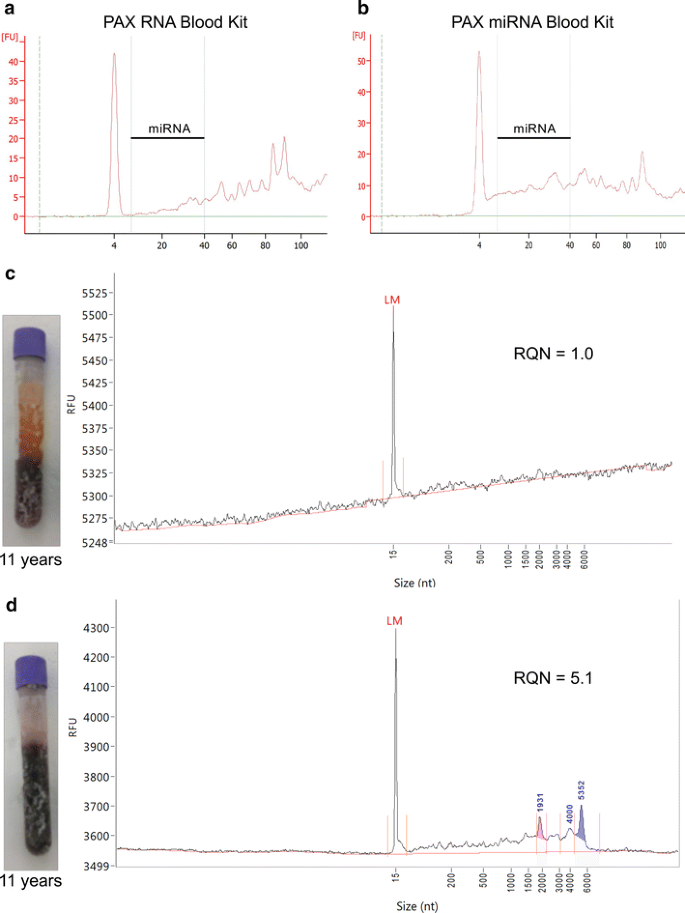



Optimized Methods For Extracting Circulating Small Rnas From Long Term Stored Equine Samples Acta Veterinaria Scandinavica Full Text
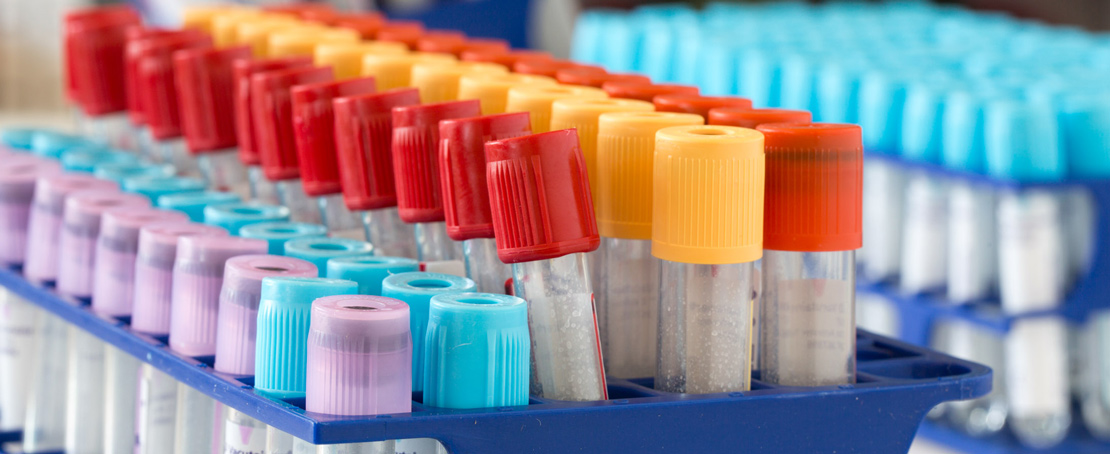



Order Of Draw
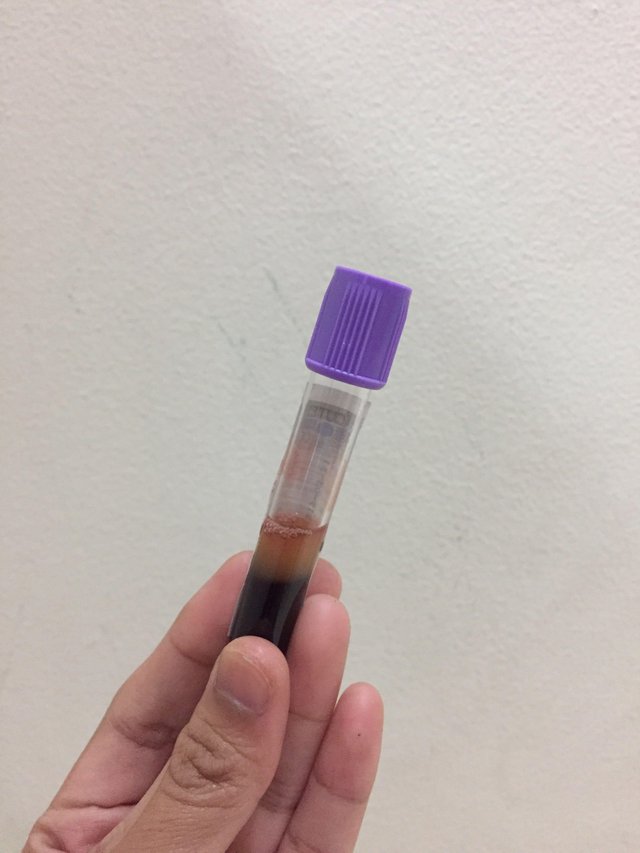



Laboratory Tubes And It S Uses Factsaboutmywork Steemit
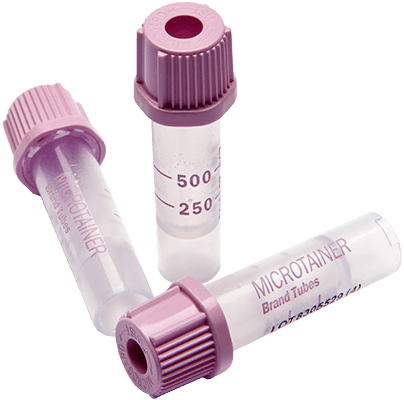



Microtainer Blood Collection Tubes




Vacutainer Edta Blood Collection Tubes Purple Stopper Animal Health Express
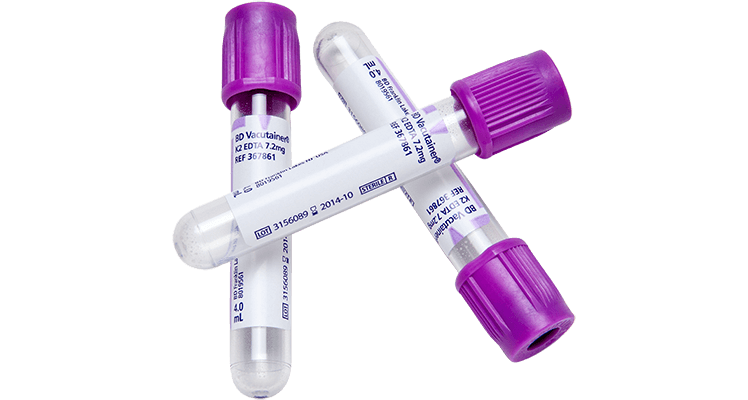



Vacutainer Blood Collection Tubes




Edta Sample Tube J13 Hwtai Biotec Laboratory Round Bottom Blood




Submit A Sample
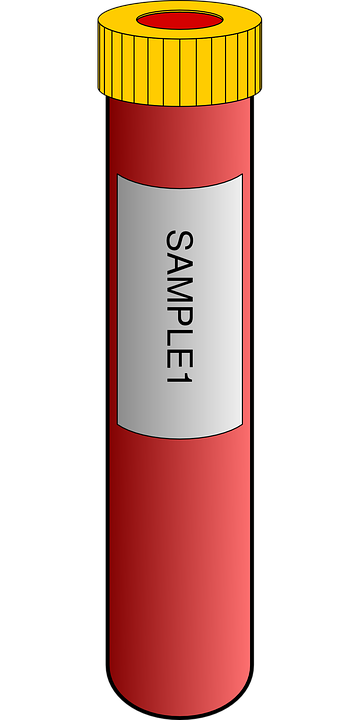



All You Need To Know About Blood Collection Tubes You Must Get Healthy



0 件のコメント:
コメントを投稿